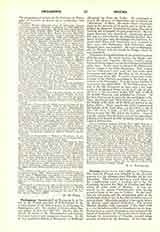

Phocaea, titular see in Asia, suffragan of Ephesus. The town of Phocaea was founded in the eleventh century B.C. by colonists from Phocidia led by two Athenians. They settled first on a small island on the neighboring coast, a territory given by the Cymaeans, between the Bays of Cymaeus and Hermaeus, 23 miles north of Smyrna. It was admitted to the Ionian Confederation after having accepted kings of the race of Codrus. Its fine position, its two ports, and the enterprising spirit of the inhabitants made it one of the chief maritime cities of ancient times. Historians speak of it but rarely before the Roman wars against Antiochus. The praetor Aemilius Regillus took possession of the town (189 B.C.); he disturbed neither its boundaries nor its laws. During the war against Aristonicus, who reclaimed the throne of Pergamum, the Phocmans took his part and, through the intervention of Massilia, escaped being severely punished by the Romans. At the time the latter had definitively established his power in Asia, Phoca was only a commercial town; its money was coined until the time of the later Empire; but its harbor gradually silted up and the inhabitants abandoned it. In 978 Theodore Carentenus built Bardas Sclerus near Phocxa. In 1090 the Turk Tchaga of Smyrna took possession of it for a short time. The Venetians traded there after 1082, but the Genoese quickly supplanted them.
In 1275 Michael VIII Palaeologus gave Manuel Zaccaria the territory of the city and the right to exploit the neighboring alum mines. In 1304 the Genoese, with the cooperation of the Greeks of the adjoining towns, erected a fortress to defend the town against the Turks, and some distance from the ancient Phocaea founded a city which they called New Phoca. In 1336 Andronicus the Young, allied with Saroukhan, Sultan of Magnesia, besieged the two towns and obliged them to pay the tribute stipulated in 1275. They continued also to pay annually to Saroukhan 500 ducats. From 1340 to 1345 the Greeks occupied the two towns, and again in 1358 for a short period. At the time of the invasion of Timur in 1403, they purchased peace by the payment of money. In the midst of difficulties the Genoese colony continued until the end of 1455, when it passed into the hands of the Turks. In 1650 a naval battle between the Turks and Venetians took place in sight of Phocaea. Today Phoca, in Turkish Fotchatin, or Eski Fotcha (ancient Phoca), is the capital of a caza of the vilayet of Smyrna, has about 6000 inhabitants (4500 Greeks), and exports salt. About six miles to the north, Yeni Fotcha (new Phoca) is situated on the Gulf of Tchandarli; it has 4500 inhabitants (3500 Greeks), and exports agricultural products.
Seven Greek bishops of Phoca are known by their signatures at the Councils; Mark, at Sardica (344); Theoctistus, at Ephesus (441); Quintus, at Chalcedon (451); John, at Constantinople (692); Leo, at Nice (787); Nicetas, at Constantinople (869); Paul, at Constantinople (879). In 1387 ancient Phocaea was separated from Ephesus and given to the suffragan of Smyrna. In 1403 it still had a titular. The Genoese colony had its Latin bishops, seven of whose names are recorded from 1346 to 1475; the later ones were undoubtedly non-residents: Bartholomew, 1346; John, 1383; John, before 1427; Nicholas, 1427; Ludovicus, about 1450; Stephanus, 1457; 2E dius, 1475.
S. PETRIDES

